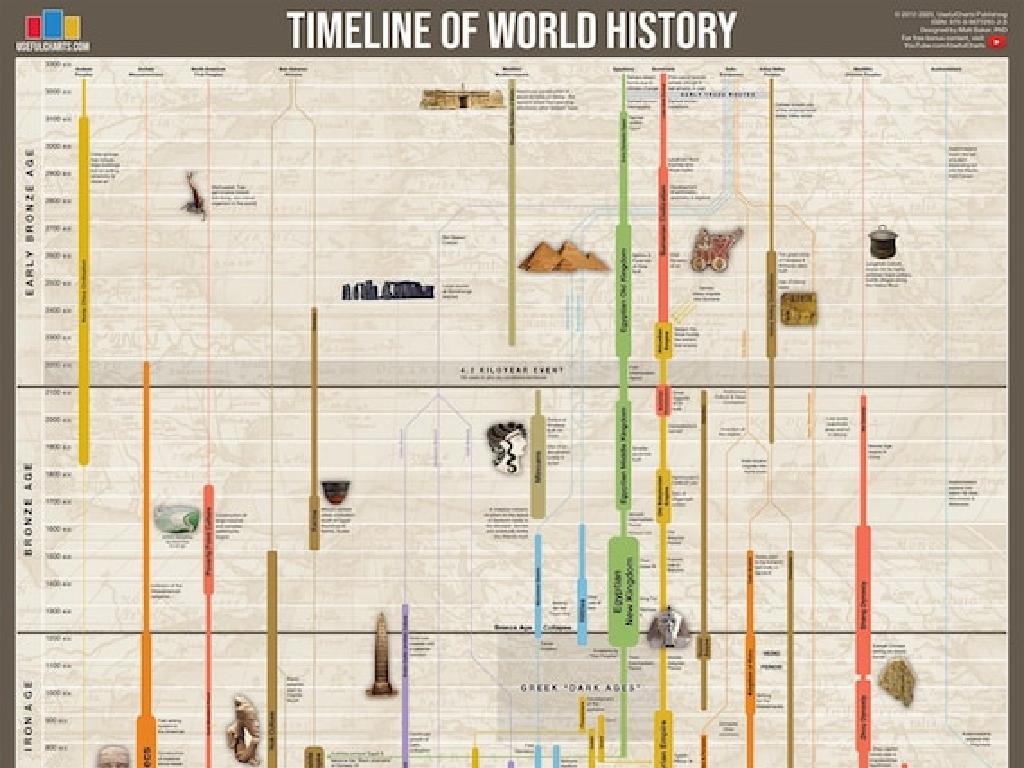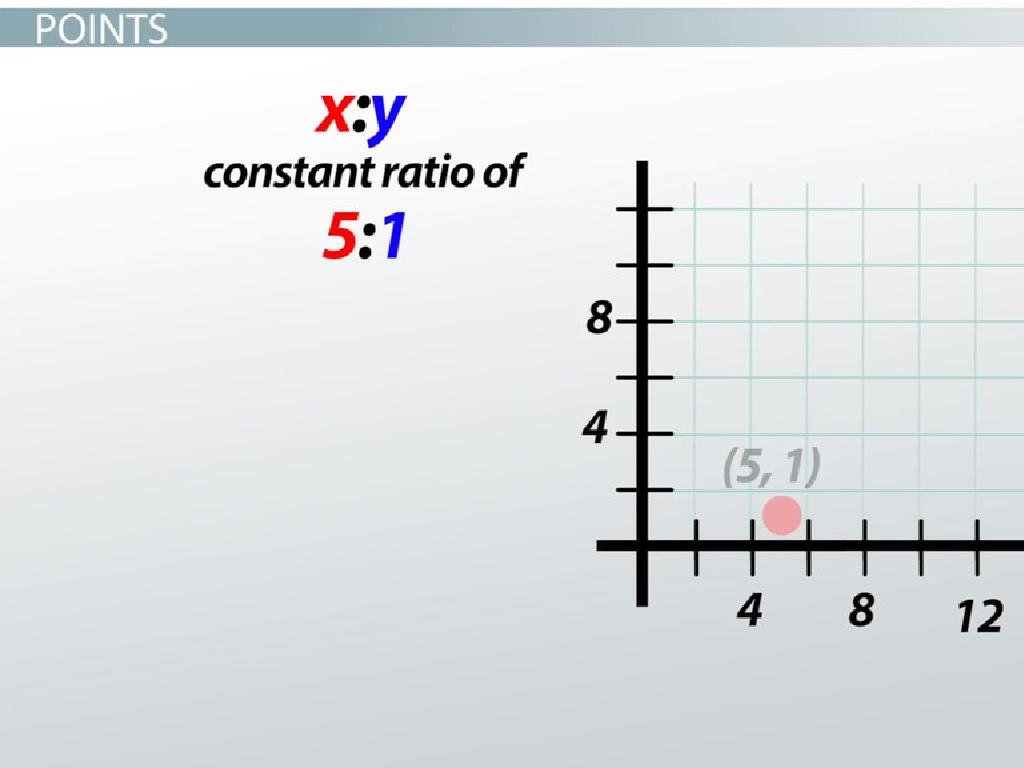Coral Reef Biodiversity And Human Uses: Explore A Problem
Subject: Science
Grade: Eighth grade
Topic: Conservation
Please LOG IN to download the presentation. Access is available to registered users only.
View More Content
Coral Reefs: Biodiversity and Importance
– Explore coral reef ecosystems
– Coral reefs are diverse underwater ecosystems harboring thousands of marine species.
– Biodiversity in coral reefs
– Biodiversity refers to the variety of life and its processes, including the different plants, animals, and microorganisms, the genes they contain, and the ecosystems they form.
– Significance of coral reefs
– Reefs provide habitat, food for marine life, protect coastlines, and support fishing and tourism industries.
– Human impacts on reefs
– Overfishing, pollution, and climate change are major threats to coral reef health and biodiversity.
|
This slide introduces students to the complex ecosystem of coral reefs, emphasizing their rich biodiversity and the critical roles they play in marine life, coastal protection, and human economies. Highlight the interdependence between coral reefs and species diversity, and discuss how this biodiversity is essential for the stability of the ecosystem. Explain the importance of coral reefs to humans, including their cultural and economic value. Discuss the threats posed by human activities and climate change, stressing the urgency of conservation efforts. Encourage students to think about how human actions can both positively and negatively affect coral reefs and the broader ocean environment.
Exploring Coral Reefs: Biodiversity and Symbiosis
– Coral reefs: diverse ecosystems
– A coral reef is a large underwater structure made of dead and living corals.
– Coral polyps: tiny architects
– Polyps are small, soft-bodied organisms that form the structure of coral reefs.
– Symbiosis: mutual life support
– Symbiotic relationships, like that between coral and algae, are crucial for reef health.
– Reefs’ role in marine life
– Reefs provide habitat, food, and protection for a vast array of marine organisms.
|
This slide introduces students to the complex and vibrant world of coral reefs, highlighting their importance as one of the most diverse ecosystems on the planet. Emphasize the role of coral polyps in building these structures and the symbiotic relationships that are essential for the health of coral reefs, such as the partnership between corals and zooxanthellae algae. Discuss how these relationships contribute to the biodiversity of the reef and its significance in supporting marine life. Encourage students to think about how human activities can impact these delicate ecosystems and the importance of conservation efforts.
Coral Reef Biodiversity and Conservation
– Diversity of species in reefs
– Reefs are home to thousands of species, including fish, mollusks, and sponges.
– Biodiversity’s role in reef health
– Healthy biodiversity ensures resilience against environmental changes.
– Coral reefs as ecosystems
– Examples include the Great Barrier Reef and the Coral Triangle.
– Human impacts on reef conservation
– Overfishing, pollution, and climate change threaten reef survival.
|
This slide aims to educate students on the rich biodiversity found within coral reefs and its critical importance to the overall health of these ecosystems. Highlight the variety of life supported by coral reefs, from tiny coral polyps to large predatory fish. Discuss how biodiversity contributes to the stability and resilience of coral reefs, allowing them to better withstand stresses such as climate change. Provide examples of well-known reef ecosystems to help students visualize the concept. Finally, address the negative impacts humans have on coral reefs and the importance of conservation efforts to protect these vital ecosystems. Encourage students to think about how human activities can both harm and help preserve coral reef biodiversity.
Threats to Coral Reefs: Human and Natural Impacts
– Human impacts on reefs
– Pollution, overfishing, and coastal development harm reefs.
– Natural threats to reefs
– Storms, temperature changes, and diseases can damage reefs.
– Coral bleaching consequences
– Bleaching affects reef health and marine biodiversity.
– Protecting reef ecosystems
|
This slide aims to educate students on the various threats facing coral reefs, both from human activities and natural events. Discuss how pollution, overfishing, and coastal development lead to the degradation of these ecosystems. Explain natural threats like storms and temperature fluctuations that can also cause significant damage. Highlight the consequences of coral bleaching, such as the loss of marine biodiversity and the weakening of reef structures. Emphasize the importance of conservation efforts to protect these vital ecosystems. Encourage students to think critically about how human actions can be changed to reduce negative impacts on coral reefs.
Human Uses of Coral Reefs
– Coral reefs in medicine
– Reefs provide compounds for drugs
– Economic benefits of reefs
– Tourism, fishing industries rely on reefs
– Cultural significance
– Reefs hold cultural value for many communities
– Exploring reef conservation
– Discuss the need to protect reefs for future generations
|
This slide aims to educate students on the multifaceted importance of coral reefs to humans, including their role in medicine, economy, and culture. Highlight how coral reefs contribute to medical research, providing compounds for drugs to treat diseases. Emphasize the economic reliance of tourism and fishing industries on healthy reef ecosystems. Discuss the cultural significance of reefs for coastal communities, often intertwined with traditions and spiritual beliefs. Finally, explore the importance of conservation efforts to ensure these benefits continue for future generations. Encourage students to think critically about how human activities impact reefs and what measures can be taken to protect them.
Conservation Efforts for Coral Reefs
– Global vs. Local Initiatives
– Compare efforts like international agreements vs. local community projects
– Marine Protected Areas
– MPAs restrict activities to conserve marine life
– Individual Actions Matter
– Simple steps: reduce plastic use, support reef-friendly businesses
– Impact on Reef Health
|
This slide aims to educate students on the various scales of conservation efforts to protect coral reefs, from global initiatives like international treaties to local community clean-ups. Emphasize the importance of Marine Protected Areas (MPAs) in safeguarding biodiversity and how they function. Discuss how every individual can contribute to reef conservation through daily actions, such as minimizing plastic waste and choosing sustainable seafood. Highlight the positive outcomes of these efforts on the overall health of coral reef ecosystems. Encourage students to think of ways they can personally contribute to conservation efforts and to understand that collective actions can lead to significant positive impacts on the environment.
Coral Reef Destruction: A Case Study
– The Great Barrier Reef’s plight
– Once vibrant, now facing threats like bleaching
– Causes of coral reef destruction
– Pollution, overfishing, and climate change as key culprits
– Effects on biodiversity and humans
– Loss of habitat, species and impact on coastal communities
– Discussing solutions to protect reefs
– Brainstorm conservation strategies and sustainable practices
|
This slide aims to shed light on the critical issue of coral reef destruction through the lens of the Great Barrier Reef. Begin by presenting the current state of the reef, highlighting the severity of coral bleaching events. Discuss the primary causes of reef destruction, including pollution, overfishing, and the effects of climate change. Emphasize the consequences of these actions on both marine biodiversity and human communities that rely on reefs for food and tourism. Conclude with a class discussion on potential solutions, encouraging students to think about conservation efforts and how they can contribute to preserving these vital ecosystems. The discussion should foster critical thinking about human impact on the environment and the importance of sustainable living.
Class Activity: Protect Our Reefs!
– Discuss conservation ideas in groups
– Design a ‘Save the Reefs’ campaign poster
Use creativity to highlight reef importance
– Develop a group conservation strategy
Consider local human impacts and global issues
– Present your strategy to the class
|
This activity is designed to engage students in active learning about coral reef conservation. Divide the class into small groups and have them brainstorm different ways to protect coral reefs, considering both local and global factors. Each group will then create a campaign poster that raises awareness about the importance of reefs and suggests actionable conservation strategies. Encourage them to be creative and to think critically about the human uses of reefs and the problems they face. Afterward, each group will present their poster and conservation strategy to the class, fostering public speaking skills and peer learning. Possible activities include beach cleanups, promoting sustainable fishing, or educating others about coral-friendly sunscreen.






